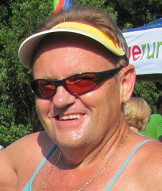- Cut your toenails and do not go for any pedicures, especially if you have never been for these before. Leave this till after race day.
- Enjoy our club’s Comrades function on the 24th of May
- No matter who you chat to or how nervous you feel, always say to everyone you are ready for the big day and feel good
- DO NOT listen to how much more hard training and how many hundreds of kilometres more your club buddies or friends have done in their preparation for Comrades
- Keep on visualising the race - from getting up and lining up, through running to crossing the finish line
- Go to bed early, keep up your healthy eating habits and go for your vitamin B injection
- If you take supplements on the run, buy them now and put them aside with all your other race day goodies
- Prepare two check lists, the first for everything you need to pack and take with to Durban, and the second for everything you need to remember on race morning.
- Stay away from family, friends or colleagues who are sick or have colds/flu
- If you get sick now, consider not going to the Comrades - next year there will be another Comrades!
- Support the training sessions organised by the club and dress warmly after training
Happy running!
Coach Rossouw


 RSS Feed
RSS Feed